by Venchito Tampon Jr | Last Updated on September 7, 2023
Generating leads for a service/product is one of the lucrative business models in today’s digital marketing.
Being #2 of the top challenges for founders in 2023, marketing that drives ROI for the business in traffic, leads, and sales is one solvable by the best driver of qualified traffic – search engine optimization (SEO).
By the end of this guide, you’ll be able to apply SEO for lead generation in your business, with practical examples to show you how it works.
8 SEO For Lead Generation Techniques
1. Think like a customer.
Effective marketing is understanding customers’ pain points, challenges, and problems so you can craft a compelling message they’ll best resonate with.
The same is true with SEO.
Think like your customer before thinking about how to attack technical SEO, on-page SEO, and link building.
The key is to dive deep into how your customers think when doing search queries on Google. Through then, you’ll be better at crafting a business-centric content strategy instead of relying purely on SEO keywords irrelevant to your business.
For instance, one of my businesses is corporate training and speaking services.
By focusing on business-centric content strategy, I can drive 30-50 qualified leads to my training business, worth $500 for each qualified lead, as I’m getting paid to speak at $500 per hour.
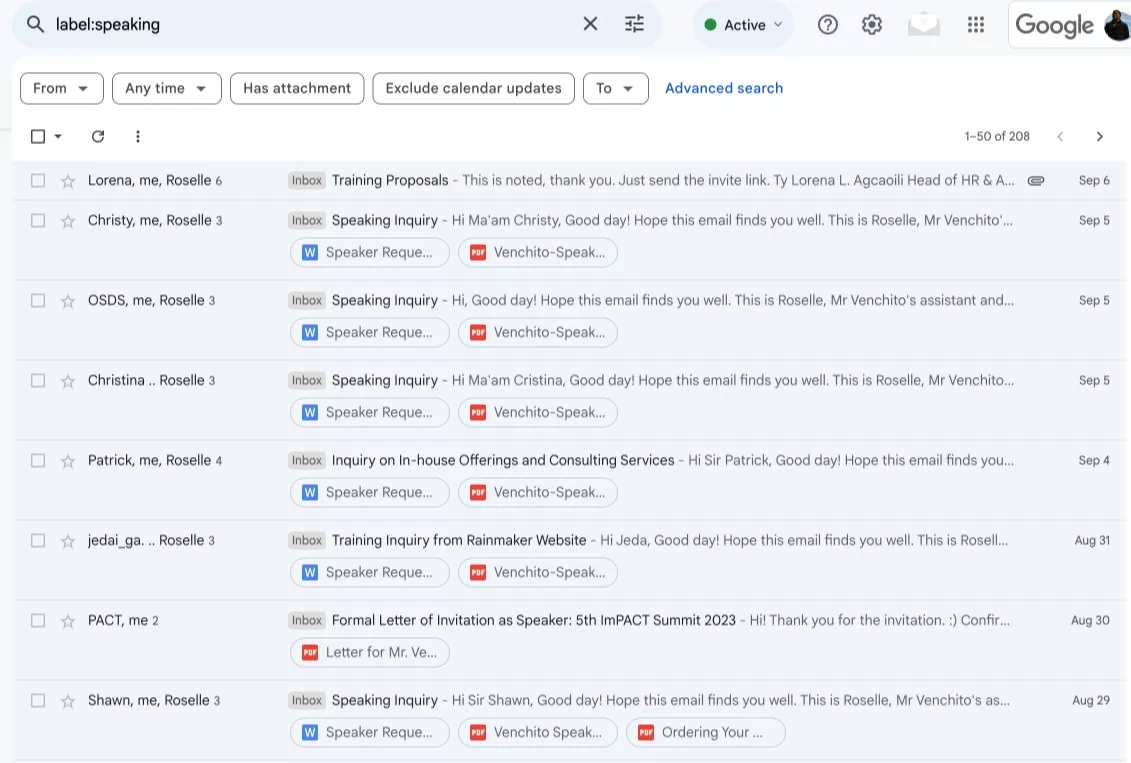
If I’m only thinking about SEO keywords, I could have published pages for “speaking services Philippines”, do basic on-page SEO, and hope it gets qualified leads for my business.
Instead, I asked them how they would find out about their service provider during my sales calls and personal interactions. What I noticed is that they don’t start with generic search queries such as “public speaking services Philippines”, but instead go very specific with “leadership speaker Philippines” or “growth mindset speaker Philipines”.
I created dedicated landing pages for each of these niche terms, some of which have zero to low search volume.
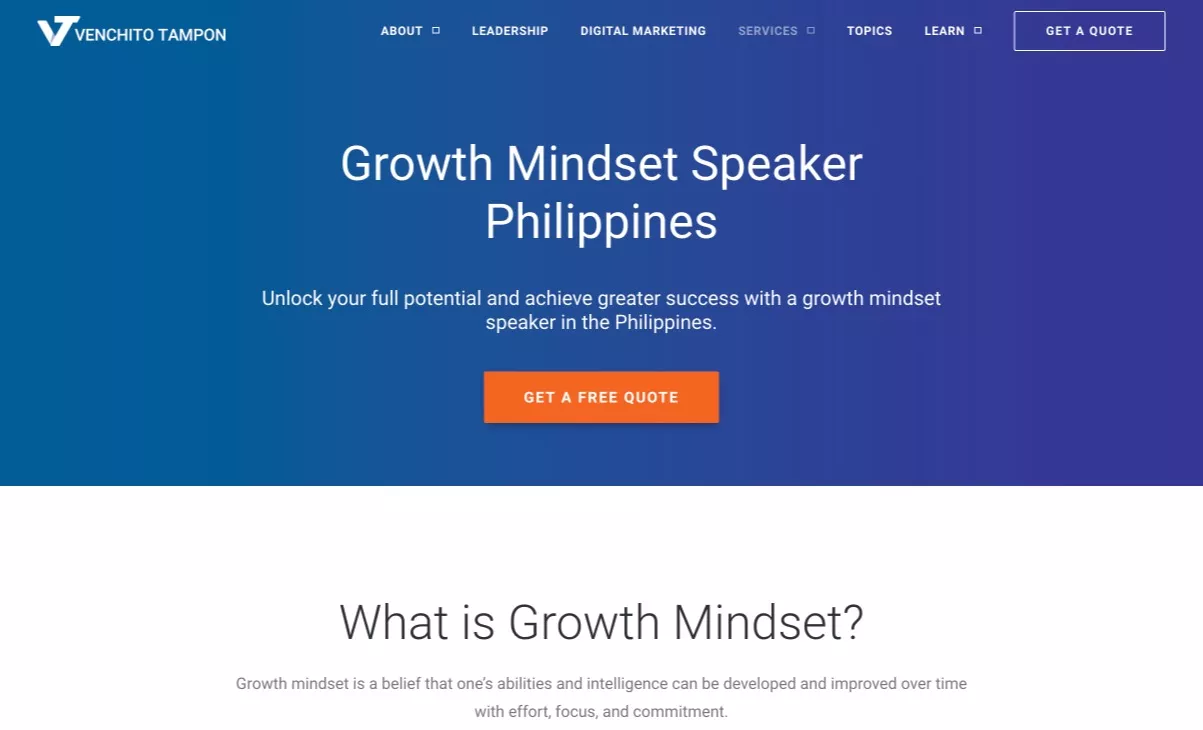
Low search volume keywords can drive qualified leads (in aggregate), given that they’re highly targeted for search users with transactional intent. Even more important is that it builds topical authority for your website, as it covers a wide range of topics your competitors’ sites don’t intend to publish on their blogs.
Talk to your sales team. Ask about your client. Be thorough in getting your customer’s needs; you will unveil enough insights to start your keyword research.
The best keyword research methodology starts from how customers type their search queries, not from proprietary SEO tools.
If you understand how your customers think and behave, you’ll be surprised at how many keyword insights you can generate.
2. Calculate Lead Value
Understanding how SEO can make you more money before executing all SEO recommendations to optimize your site and rank it for your commercial keywords.
This involves calculating how much one qualified lead is worth for me.
For instance, our coffee eCommerce site operates like a B2B sales process. Instead of a typical buying process where customers pick their product, add it to a cart, check out, and deliver the physical product to them.
We’ve found that 100% of our customers initially ask for a “quotation” or “proposal” that fits their coffee machine requirements.
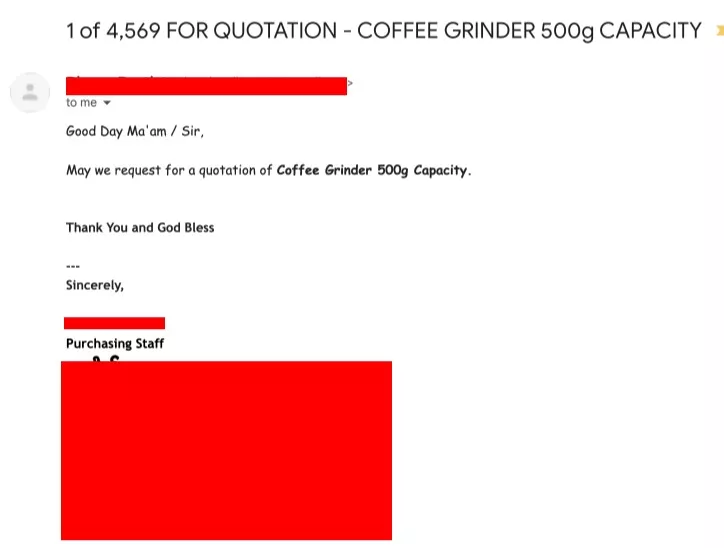
Given that each coffee machine costs between $500 to $7,500, most food & beverage personnel or cafe owners must first consider the specs and technical know-how of each purchase.
Our buying cycle takes a little longer than a typical eCommerce website.
This means that the value of lead on our end is much higher, ranging from $1500 to $2500. Assuming we can close 20-30% of all leads.
To calculate Lead Value, you can use the following formula:
Lead Value (LTV) = Average Sale Value × Average Number of Repeat Transactions
× Average Retention Time (in months or years)
Where:
- Average Sale Value is the average amount of money a customer spends during a single transaction.
- Average Number of Repeat Transactions is the average number of times a customer purchases within a given period (e.g., a month or a year).
- Average Retention Time is the average length of time a customer continues to buy from your business.
By calculating lead value, you can prove the marketing investment for SEO services and its direct impact on leads and sales.
3. Drive conversions from TOFU content
Top-of-the-funnel content is mainly created to rank for informational keywords and drive organic traffic from people searching for answers to industry questions.
Examples of these search queries are:
- why coffee machines are expensive?
- how do coffee machines work?
- how long do coffee machines last?
This content isn’t intended to sell the audience on a product or service but to educate, help, and answer common questions or pain points.
There is a way to drive direct conversions from TOFU content.
We did this to one of my businesses – a coffee shop franchise, where we drive significant leads every month.
Here are some quick steps we made.
Sticky Widgets
You can include a sticky widget in your blog post section where it is mainly visible to readers.
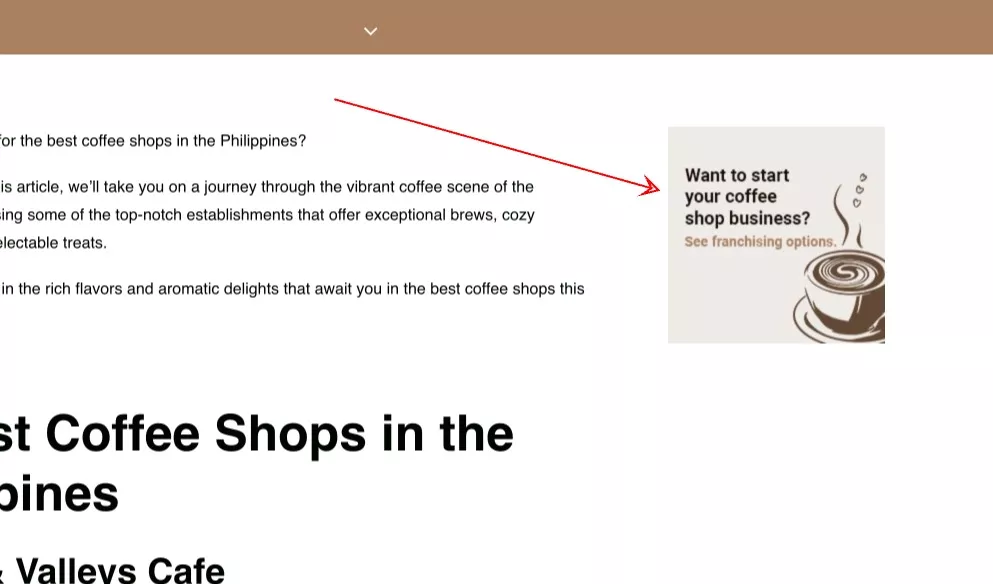
It is a secondary objective to drive conversions. You still want web users to be satisfied with your informational content (it’s the very reason you created it in the first place).
But just as they begin to consume the value, you build initial trust. And this trust can later translate into sales.
Strategic Internal Link Placements
Most SEOs do internal linking to drive link equity to their other important pages. While that’s the main objective of internal linking, it can also help with helping users navigate to different places on your website.
For example, in one of the sections of my leading guide on starting a coffee shop business, I added an internal link to my coffee shop franchise.
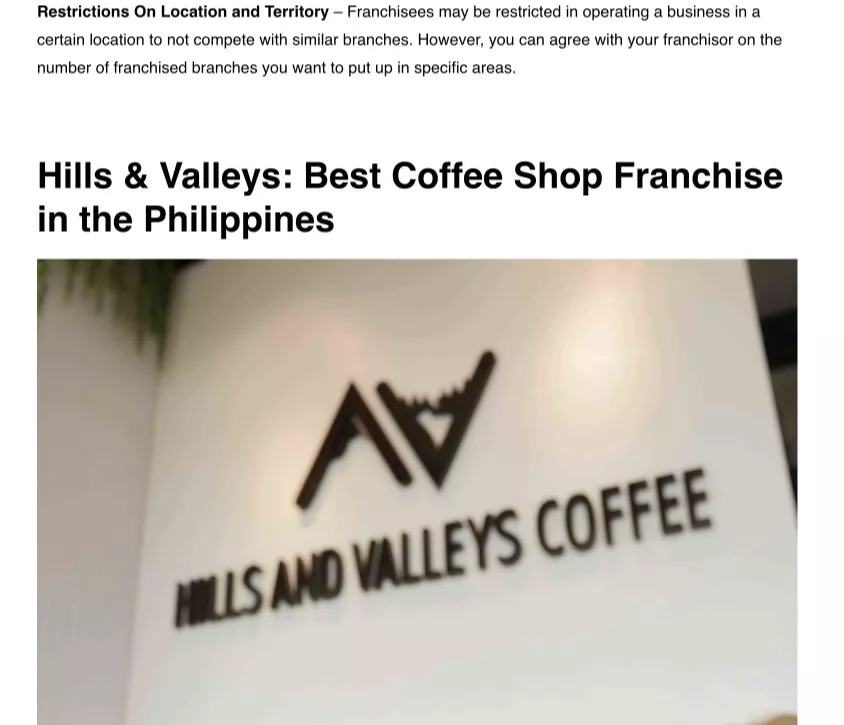
Not only does it pass link equity to my franchise page, but it becomes more visible for my potential clients to see it directly on their informational page.
Highly Visible Contact Information
For industries with a high customer touch, the easier it is for your readers to contact you, the more likely you’ll increase your leads.
What I did to make contact information sticky at the top bar. Web visitors can contact us via phone or email without visiting our contact page.
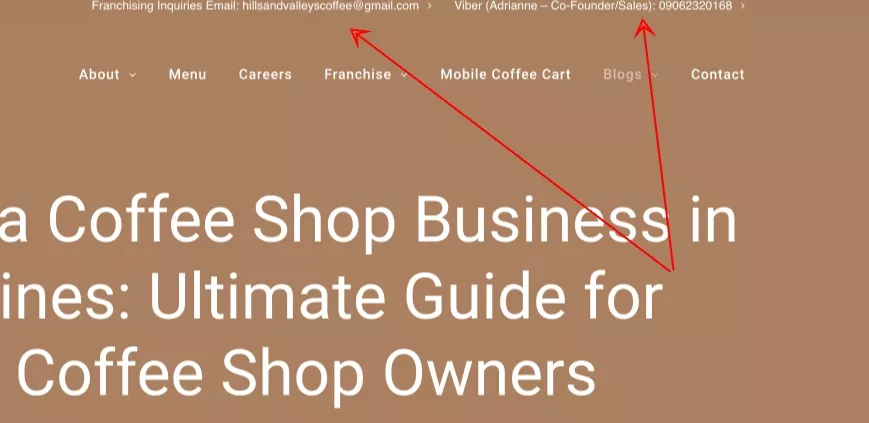
4. Steal traffic from competitors’ branded keywords.
If a website is new, it doesn’t have much authority to compete against its competitors. Therefore, you don’t see significant traffic in the first few weeks after launch (case: sandbox).
But as you create a consensus of authenticity from trusted sources like citations, socials, and profiles, you allow Google to favor traffic on your site.
One of the best ways to get early traffic for your new website and generate qualified leads is to bank on your competitors’ keywords.
Topical competitors are currently ranking for niche keywords (even their own branded terms) that you can use to steal traffic for your site.b
For instance, I’ve created 20+ dedicated landing pages targeting all competitors’ keywords for my coffee franchise.
These pages offer an alternative option to our Hills & Valleys Cafe Franchise.
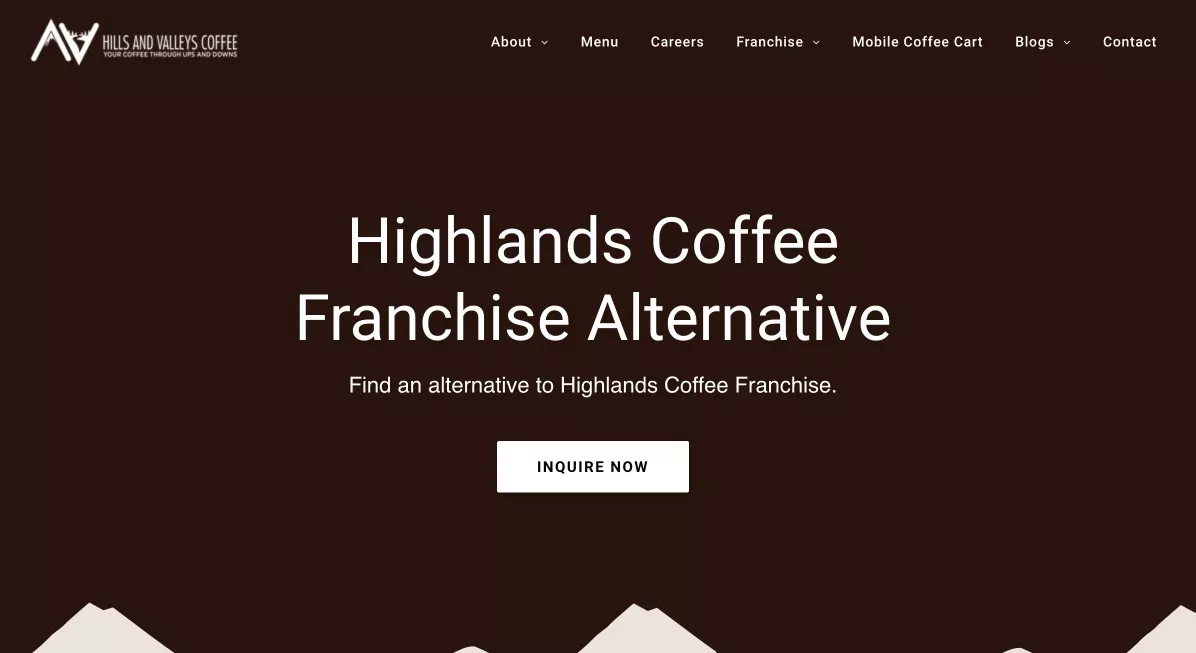
We give enough information about our competitors’ franchises, from a quick cafe overview to specific investment and franchise details.
Then, at the bottom of the page, we added a section to promote a franchise alternative (our Hills & Valleys Cafe).
By doing so, we attract and rank for most of our competitors’ keywords.
We even ranked #1, given that some competitors don’t have their websites yet.
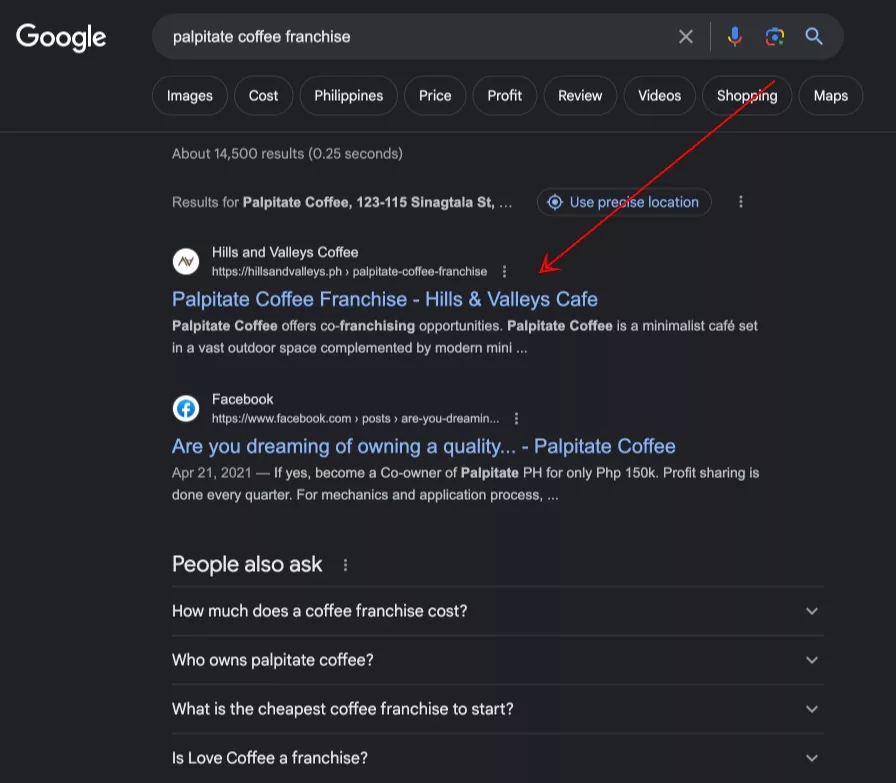
How do you capitalize on competitors’ keywords?
Use Ahrefs’ Keyword Explorer to find branded keywords of your competitors. If you can find “vs.” or “alternative” on the key phrase, it’s highly targeted for those searchers looking exactly for alternatives.
Publish “alternative” pages to competitors’ products/services. See which competitors are highly relevant to your primary offering. In our case, we only get cafes that also offer franchise opportunities.
Satisfy the search intent by providing enough information for the readers. The company of the competitors, all pertinent details they need.
You can create a comparison chart or table to show feature differences for web-based products.
Build internal links to it from other relevant blog posts/pages. This will help increase its rankings and reach page 1 on Google within a few days.
By ranking for competitors’ branded keywords, you can steal traffic from them and generate leads for your business.
5. Build authors’ expertise on external publications.
Aside from establishing your on-page signals for your site, it’s an excellent way to create trust signals off-page on external web properties.
Its impact on generating leads can be directly attributed to other publications driving traffic to your website (“referral traffic”).
In the age of guest blogging, it’s crucial to stand out among the crowd of content by establishing your expertise in the subject area.
Here are some ways to build authors’ expertise off-page:
- Choose topics that aren’t too general and may only require technical expertise to finish the content (e.g., how to fix the Breville espresso machine).
- Write more detailed author bios with strong attributions to your credentials and portfolio as a niche expert.
- Build internal links to your guest posts from your other relevant guest posts (this also helps increase the visibility of your main guest post).
- Invest in hiring experts who are also writers in your space. This speaks of the quality of content they can produce.
By building external trust signals on your site, you establish the right EEAT signals to develop the entire topical authority of your brand. Which eventually can help you rank for commercial keywords that drive direct sales and leads for your business.
6. Don’t ignore local SEO.
Local SEO is mainly focused on helping the business climb the top of local business map packs displayed atop search engine results pages.
Compared to ranking for national keywords where competition is off the roof, you have a high chances of ranking for local keywords with enough optimization on your GMB on your website.
Claim your Google Business Profile.
The free Google service lets you create a business listing online. It is then verified by Google, allowing you to display your listing on Google Maps.
When your business name is searched, you’ll find Google displaying your map location, with an image and all the general business information you entered.
Follow the procedure here and claim your Google Business Profile.
Recommended Reading: 27 Link Building Strategies For Local SEO
Even if you’re a B2B, you’re likely to succeed in local SEO and gain constant leads by ranking for local map packs and organic search results for local keywords.
For instance, we’ve ranked highly for our target keyword, “coffee shop in San Jose del Monte Bulacan”. This is our first cafe branch in one of the developed cities in the Philippines.
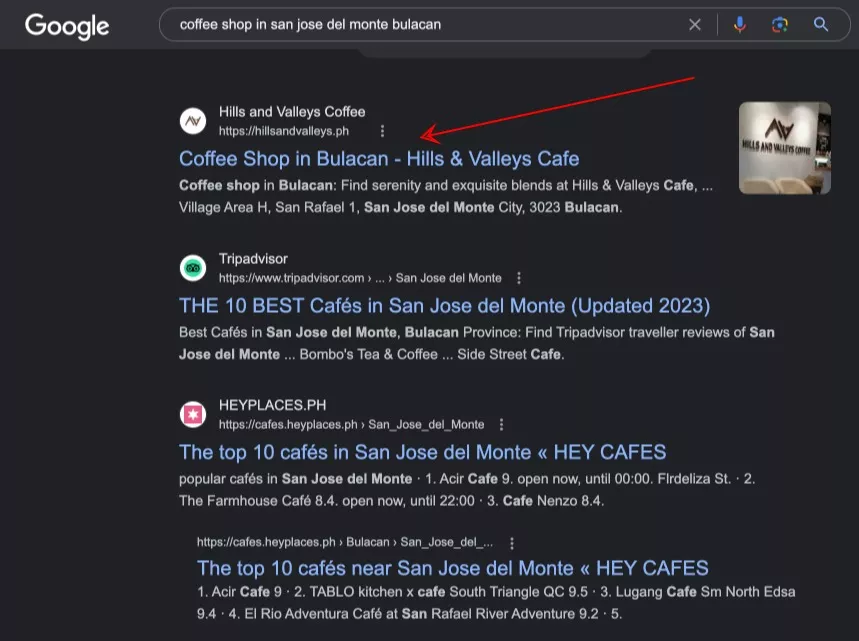
By targeting this exact keyword on our homepage, we let Google see its importance for us to get rankings for this particular keyword.
Pro tip: Find more latent semantic keywords you can rank with new pages. In our example, we also rank as an “Instagrammable cafe in Bulacan” with a dedicated page.
7. Publish assets that aren’t treadmill traffic.
I got this from Brian’s Dean video on SEO tips 2023, which detailed some advanced techniques to get sustainable traffic from Google.
By publishing assets that aren’t treadmill traffic, you don’t rely on a surge of traffic for days. But you’re targeting a sustainable, constant flow of organic traffic (and natural links).
Some of these assets that can drive sustainable traffic:
- YouTube videos that rank for “how-to” or any informational industry keywords.
- Industry guides that tend to rank for highly searched head terms. Static pages that either define a term or satisfy “when”, “why,” and “how” questions.
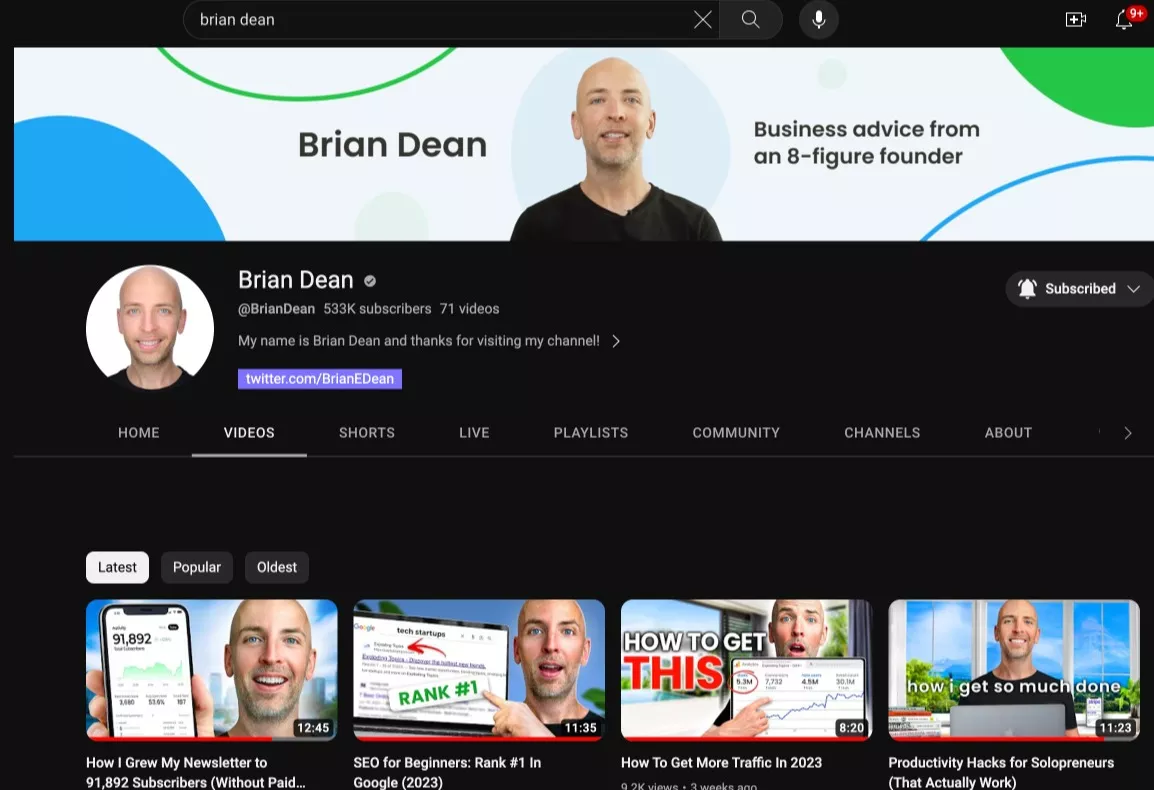
In generating leads for your business, this speaks wonders as you can invest the resources initially but experience long-term traffic after you publish them.
Of course, all this requires initial effort, such as building initial links to industry guides so they can rank highly for their target terms. But as they rank, they receive passive natural links from other content creators in the space, reaching an even higher spot on Google’s SERPs.
8. Monitor Your Branded Keywords
As you rank for different industry keywords, you build curiosity in the minds of your search users.
Most of them would do Google searches for your “brand”, knowing more about what you do and your offers.
All these branded keywords are by-products of different marketing methodologies, paid ads, and organic rankings as you become the top of the mind for topically relevant how-to information.
It is best to monitor for branded keywords and see what questions people ask about your brand.
If there are questions and related queries, you haven’t answered yet or don’t have a dedicated page for them. You can create one to satisfy all these search intent.
Doing so allows you to funnel all keywords (branded and niche) so they can come deeper into your sales cycle and convert them into customers.
You’ll be amazed by the results when you put these SEO tips for lead generation into practice. Check out some of our work for proof.
We’ve covered a high-level look at what goes into an effective content-based link building strategy.
If you’d like to learn more, you can get in touch with us today to discuss how we can help scale your business.
The Author
Venchito Tampon Jr
Venchito Tampon is a Filipino Motivational Speaker, Corporate Trainer, and a Leadership Speaker in the Philippines. He is the CEO and Co-Founder of SharpRocket, a link building agency. With a decade of experience, Venchito has a proven track record of leading hundreds of successful SEO (link builidng) campaigns across competitive industries like finance, B2B, legal, and SaaS. His expert advice as a link building expert has been featured in renowned publications such as Semrush, Ahrefs, Huffington Post and Forbes. He is also an international SEO spoken and has delivered talks in SEO Zraz, Asia Pacific Affiliate Summit in Singapore, and Search Marketing Summit in Sydney, Australia. Check out his other businesses, Hills & Valleys Cafe, Blend N Sips and Saas Pursuit.
How our LINK BUILDING AGENCY builds 250 links/mo consistently using Predictable Link Building Methodology™…
- Using a SIMPLE and PROVEN system
- Using a SCALABLE strategy
- No private blog networks
- No creepy outreach emails
